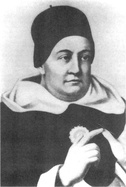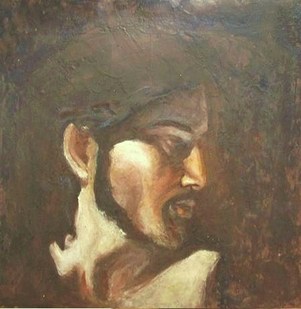
Funding artists is eternally problematic. Art demands a high degree of freedom of thought and expression to keep it alive; a hefty payment can dampen that freedom in a moment, often leading to works that may acheive some semblance of entertainment, but which fail to compel us on any deeper level. Complete failure of funding leads to the extreme of starvation--or, in many cases, a second job. The internet age has led to some innovative options in funding the arts. I'm sure I'm not the only one who finds all the possibilities intriguing. But which options are most ethical, most likely to produce the spiritual results we long for?
I'm speaking as an artist, not an academic. So you won't find me citing academic authorities. I have read the original source documents described here, researched the original languages when I find the meaning obscure, and applied the sense my spirit makes of these works. I apologize more for my ignorance than for my lack of convention. Please bear in mind that my opinions on these works may change at some future point when more becomes clear to me. This essay will be published in four installments: The Problem of Patronage, The Morgue of the Marketplace, The Fallacy of Fanfare, and Render to God that which is God’s.
With all due respect to Thomas Aquinas, whose later works touching on creativity fascinate with the breathless quality of ecstasy, I beg to differ on the subject of supporting the arts, which he lays out in his Commentaries on Aristotle's Nicomachean Ethics. And since he is a saint, I'm sure he will forgive me if I've misunderstood him.
The Problem of Patronage
There are those who glorify the Middle Ages as a period when art achieved its highest purpose: to instruct the common man about God and spiritual life. To a great degree, this is true. For the ninety-nine percent of that day, most of their information about God came through the arts, although the men of power and influence within the Church seem to have kept a stranglehold on the subjects of these works. The Church promised rich, influential men that they were storing up wealth in Heaven when they contributed to the beauty of the Church’s art objects here below. As for the one percent, the patrons whose fortunes funded cathedrals, choral works, the copying of manuscripts—what did they learn about spirituality from their contributions to the arts?
I'm guessing not much.
Patronage, puffed up and full of pride, is a spiritually bankrupt system built on sand and leaning hard into moral collapse. Who told the rich man he could buy his way into the Kingdom of Heaven by funding a work of great beauty? Not Jesus: “It is easier for a camel to go through the eye of a needle than it is for a rich man to enter the Kingdom of Heaven.”
Patronage is the wealthy man’s answer to acquiring status in exchange for a portion of his riches. As Christians, we do not demand equal footing with the wealthy or the powerful. We do not seek status. We do not purchase worldly power. We realize that looking good and being good are two different things. There is only one who is good, and that is God. We are each equal in God's eyes with every other human being. We each look our best when we tell the truth about ourselves and our own need for grace. Then we are poor in spirit. Then we belong to the kingdom of heaven. We bring heaven to earth when we acknowledge that every good and perfect gift comes down from above.
The spirit of patronage is in direct contrast with the radical attitude of the Beatitudes, poverty of spirit. God himself did not stand on his dignity, his pride, or his honor. Only God stoops so low as to humble himself, making himself nothing so that we can bond with him. God is born a puking, helpless infant in a barn, surrounded by beasts, endangered by the rage of a deadly King. He's not asking us to do anything he hasn't already done.
When he teaches us to be poor in spirit, Jesus does not ask us to beat ourselves up because we are so bad. He only asks us to follow his example because he is so good.
The Spiritual Conundrum of Riches
The moment Christianity became a legally endorsed religion in Rome in 313 A.D., I expect wealth became a spiritual conundrum. Jesus taught his followers to pay Caesar what was due him, and to pay God that which is God's. He taught his followers not to hold on to wealth--he even told a wealthy young ruler to give up everything he had to follow him. The Roman Emperor, on the other hand, didn’t especially care what people did with their wealth, as long as they paid their taxes and refrained from funding an insurrection. Obviously, as much as Constantine admired Christianity, he had no intention of giving up his own wealth to follow its teachings. In fact, the stability of the Roman Empire rested firmly on the riches of the Emperor, and his solid relationships with the wealthy citizens of Rome. Naturally, the new state religion stopped short of demanding that its most powerful citizens share their riches with all.
Most likely, the newly political Church was not inclined to share the teachings of Jesus about wealth. The dichotomy between Christ's concepts of spirituality and wealth and Constantine's remained unexplored. Over time, a new path was forged. The Church followed the Virtues of Aristotle, which had been uniformly respected and taught by the Greeks for centuries. They insinuated that the well-to-do need not give up their wealth, but simply to selectively share their riches with the public by supporting religious art.
In Jesus’ day, there were several gates to Jerusalem that merchants could pass through. When entering through the wide gates, a tax was due, based on the amount of goods being carried into the city for exchange on the market. Those who were savvy could use a narrow breach in the wall, called “The Eye of the Needle,” to escape these taxes. There was only one catch, if you’ll excuse the pun: a heavily laden camel could not pass through this passage. Only the lightly burdened beast could scrape through the gap. Over time, art patronage became the eye of the needle wealthy church members were encouraged to pass through to enter the Kingdom of Heaven. But because the system of patronage permitted their pride to remain unchecked, wealthy patrons may still have eluded the true spiritual objectives expressed in the Beatitudes. Art patronage might carry their status-seeking worldly values to the gates of the kingdom of heaven--but not inside them.
When I attended the Art Academy of Cincinnati in 1975-76, I encountered an updated system of patronage with a new twist: it was called conceptual art. The work of the artist was to convince the public that purchasing his art would enhance the patron’s status, regardless of the technical or objective value of the work. Artists who engaged in this form of art guffawed loud and long on their way to the bank—or planned to while washing dishes for a living. I was never fond of conceptual art. I called it “con art.” After many conversations with Richard Mullins about the Beatitudes and art, I returned to the Bible College the following year. I had become sure, partly because of Richard’s example, that there must be something better an artist who is a Christian can do.
St. Thomas Aquinas, patron saint of scholars, philosophers, and theologians, solidified the convention of mixing two contrasting approaches in the Commentary on Aristotle's Nicomachean Ethics. These ten scrolls blend Greek ethics with Christian teachings such as the Beatitudes. The teachings of Aquinas ultimately produced a culture dominated by art and architecture produced in the name of the Church. This period of history, known as the Middle Ages, flourished for centuries and effectively transmitted faith to the masses by means of art.
Although many artists benefitted from patronage, artistic geniuses like Michelangelo and Da Vinci found the system repugnant. Despite being stifled by their patrons’specifications, each of them invented ways to rebel against the Popes who commissioned their works. Their acts of defiance against the system of patronage can still be detected in the art they produced.
With all due respect for the triumph of art carried out through the culture of the Middle Ages and the spiritual wisdom of St. Thomas, a distinct tension remains between the Virtues of Aristotle, which depend on mostly on wealth, and the Beatitudes of Christ, which call simply for a Godly outlook--which any humble human can afford.*
The most important objective in supporting the arts is not to divest the wealthy of their riches, but to give artists the opportunity to share their gifts. The artist believes that the true and highest value of art lies in its spiritual ability to touch hearts and lives. The artist knows that over time, art can shift the perspective of a culture. To create a lasting and powerful work, the artist must not be too concerned about commercial success. By its very nature art that moves us will be controversial, perhaps disturbing. The artist will face criticism from those who are not immediately gratified by his message. Still, the change in perspective effected by a work of art is priceless. It can never be compensated by money.


 RSS Feed
RSS Feed
